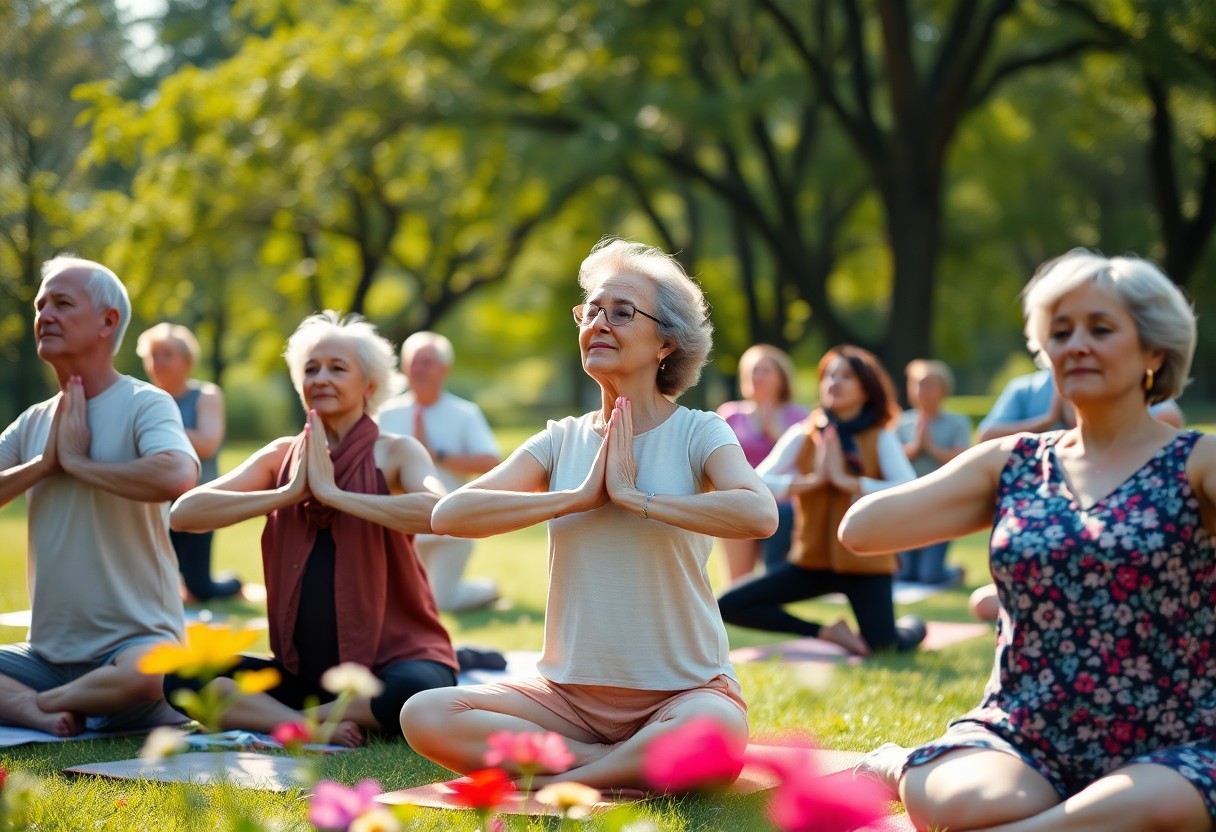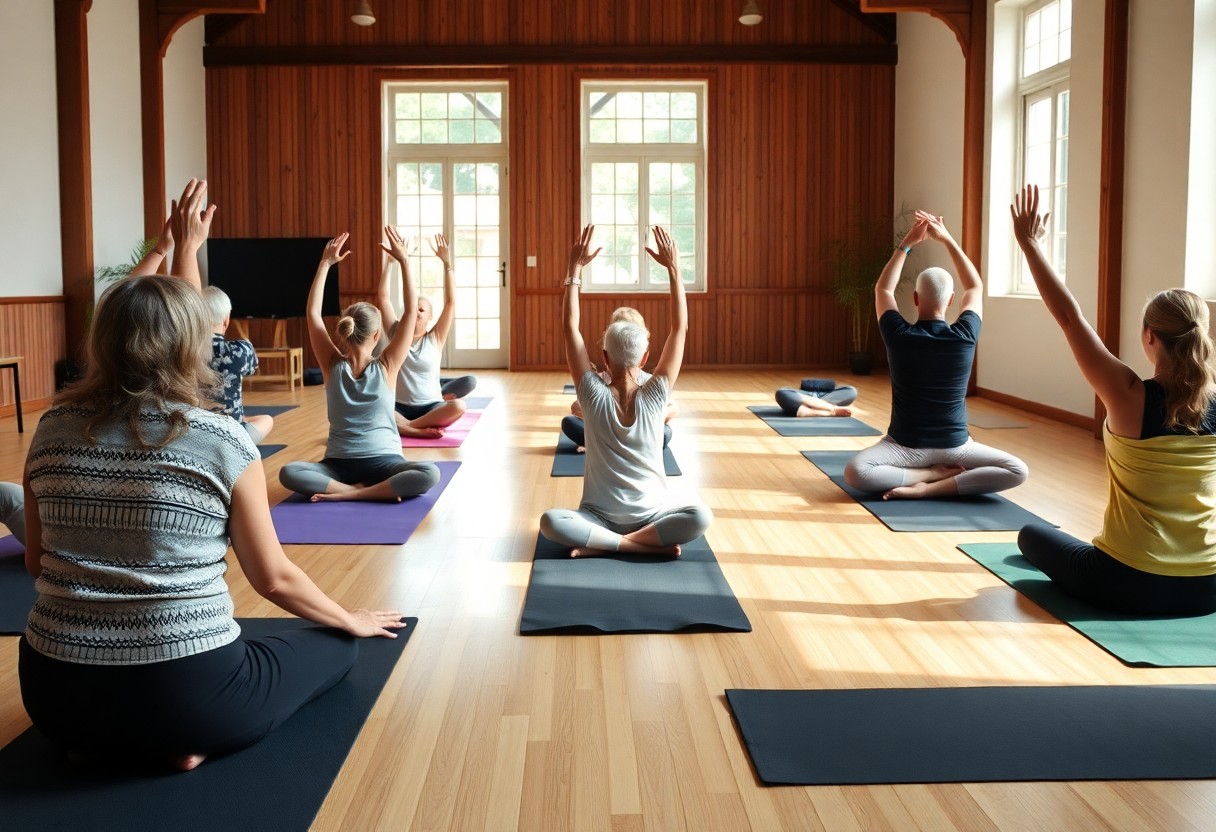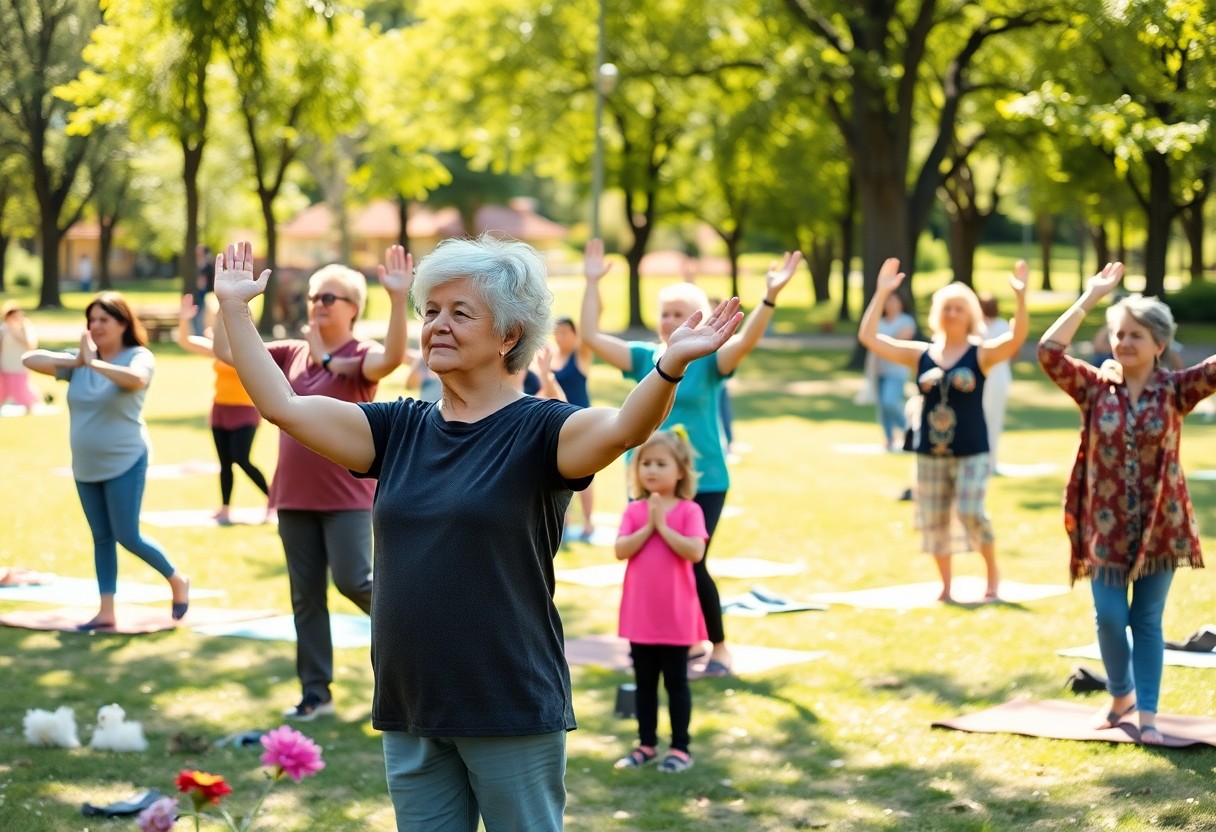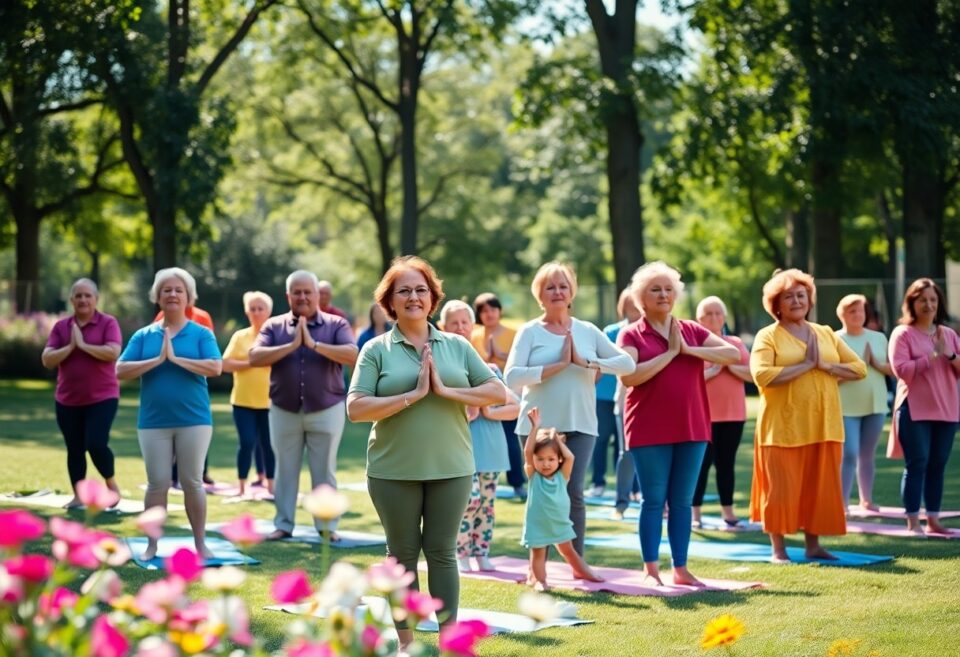Kids and seniors alike can greatly benefit from tailored yoga programs that support flexibility, strength, and mental well-being. When you engage in yoga designed specifically for your age group, you reduce the risk of injury while enhancing overall health. For seniors, gentle poses improve balance and joint health, while kids develop coordination and focus through fun, age-appropriate sequences. By choosing the right program, you ensure a safe and effective practice that nurtures both body and mind no matter your stage of life.

Crafting Youthful Energy: Yoga for Kids
Benefits of Early Practice
Introducing yoga to children at an early age can enhance not only their physical health but also their cognitive and emotional development. You might notice improvements in your child’s balance, coordination, and overall motor skills as they learn poses that promote strength and flexibility. Studies have shown that children practicing yoga regularly can experience reduced symptoms of anxiety and behavioral issues, thanks to the calming breathing techniques and mindfulness exercises. For instance, a 2019 study published in the Journal of Developmental & Behavioral Pediatrics found that children aged 6-12 who engaged in yoga twice a week showed significant improvements in attention span and emotional regulation compared to peers who did not.
The foundation built by early yoga practice also supports better posture and injury prevention as kids grow. Since modern lifestyles increasingly involve sedentary activities, such as screen time and less outdoor play, yoga serves as an engaging way to counterbalance these trends with movement and body awareness. You will likely observe that your child gains confidence and develops a sense of discipline and respect for their own body, equipping them to handle stress and physical challenges more effectively in their teenage years and beyond.
Cognitive benefits extend into academic performance and social interactions as well. Yoga encourages concentration and mindfulness skills that translate into improved learning capacity and emotional intelligence. When children participate in group yoga sessions, they have opportunities to cultivate empathy and communication skills by collaborating with peers. These aspects contribute to holistic growth, helping your child become more mindful, composed, and resilient while navigating school and social environments.
Engaging Yoga Styles for Children
Kids often respond best to yoga styles that incorporate storytelling, games, and imaginative play. For example, Vinyasa flows designed with animal poses—like the downward dog, cobra, or flamingo—invite children to mimic natural movements, making sessions dynamic and relatable. You could explore creative formats like “Yoga Adventure” classes, where the narrative guides children through a jungle or a magical forest, holding their attention and stimulating their imagination alongside movement.
Gentler Hatha-based sessions that focus on foundational poses and mindful breathing suit younger children who benefit from calm, structured environments. Using props such as colorful mats or soft toys can make poses more accessible and enjoyable for your child. Additionally, incorporating music or rhythmic chants helps foster a playful atmosphere while reinforcing breathing exercises and posture alignment. Some programs even integrate partner yoga, promoting teamwork and social bonding.
Beyond the usual styles, Kundalini yoga adapted for kids emphasizes breath control and simple meditative practices, which can help balance energy levels and support emotional well-being. You will find that tailoring yoga styles to your child’s interests and temperament significantly enhances their engagement, making practice something they look forward to rather than a task. Expertise in child-friendly instruction methods ensures classes remain safe, age-appropriate, and developmentally enriching.
By integrating themes, music, and interactive elements into your child’s yoga routine, you can cultivate a sustainable practice that nurtures their body, mind, and spirit while keeping sessions fun and inviting.
Enhancing Grace in Golden Years: Yoga for Seniors
Tailored Practices for Senior Health
The variety of yoga poses that support seniors aims to enhance joint mobility and muscular strength without overexertion. You might find that gentle stretches focusing on the shoulders, hips, and knees help maintain your range of motion and reduce stiffness. For example, poses such as Cat-Cow or seated spinal twists not only improve flexibility but also promote better circulation, which is crucial as blood flow tends to decrease with age. Incorporating breath awareness techniques during these movements encourages relaxation and helps manage age-related stress and anxiety.
Balance tends to wane as you grow older, increasing the risk of falls. Yoga postures like Tree Pose or Chair Pose, when practiced under guidance, work on improving proprioception and steadiness. These poses strengthen key muscle groups involved in stabilization, offering you more confidence in daily activities such as walking on uneven surfaces or climbing stairs. Additionally, integrating gentle variations of these poses allows adaptation to individual ability levels, making the practice both effective and accessible.
Beyond physical benefits, tailored yoga practices can bolster mental acuity and emotional well-being. Mindfulness exercises embedded within the sessions nurture cognitive focus and short-term memory, which moderately decline with aging. You may also appreciate meditation and guided relaxation segments that help regulate mood and foster a positive mindset. By consistently engaging your mind and body through these customized programs, seniors often experience a renewed sense of vitality and enhanced quality of life.
Safety Considerations and Modifications
Safety remains at the forefront when designing yoga sessions for seniors, where you often encounter varying degrees of mobility limitations or chronic conditions like arthritis or osteoporosis. Choosing props such as blocks, straps, or bolsters can assist in maintaining proper alignment and avoiding strain in vulnerable areas like the lower back or knees. For instance, using a chair for seated poses offers stability and reduces the chance of falls, providing a secure environment to explore new postures.
Certain poses that demand excessive spinal flexion or rapid transitions should be approached with caution or substituted with gentler variants. For example, deep forward bends might be replaced with supported seated stretches to minimize risk. You may benefit from slow and deliberate movement guidance, emphasizing controlled breathing patterns to prevent overexertion or dizziness. Modifications usually involve simplifying flows and extending hold times to ensure safe engagement without aggravating existing conditions.
The guidance of an experienced yoga instructor familiar with senior-specific concerns can make all the difference. Tailored adjustments based on personal health status and real-time feedback empower you to build strength safely. Group classes or private sessions that address these modifications provide a nurturing setting, allowing gradual progress while reducing fear of injury. Emphasizing gentle progression promotes sustained participation and long-term gains.
Adopting safety measures through appropriate modifications and accessories significantly minimizes injury risks. Exploring options like wall-supported balances or bolstered reclining postures gives you alternatives that accommodate your unique needs. Moreover, gradually increasing practice intensity aligned with your comfort and monitoring bodily responses prevents negative outcomes. Collaborate with instructors who understand your medical history to devise a practice plan enhancing benefits without compromising safety.

Bridging Generations: Intergenerational Yoga Classes
Designing Inclusive Programs
Crafting intergenerational yoga classes means thoughtfully blending the distinct physical capabilities and motivational drivers of both seniors and kids. You’ll want to focus on cultivating a space where flexibility is encouraged—not just of the body but in the approach to teaching. Starting with poses that offer modifications ensures accessibility; for example, chair yoga options allow seniors with mobility limits to participate actively, while kids can be encouraged to experiment with more dynamic movements. Structuring sessions with clearly defined segments—gentle warm-ups, paired partner poses, and calming cool-downs—helps maintain engagement across age groups while promoting shared goals like balance and mindfulness.
Integrating elements that foster simultaneous participation enhances inclusivity. Offering visual aids and auditory cues suited to different learning styles can help children who respond well to imaginative stories and seniors who appreciate clear, paced instruction. Utilizing props like blocks and straps allows everyone to adjust postures safely to their level. Additionally, protocols for instructors to monitor individual comfort and gently encourage pacing prevent any member, whether an energetic child or a senior managing arthritis, from feeling overwhelmed. Such intentional design communicates respect for diverse needs and creates an environment primed for both physical and emotional connection.
Consider thematic or mindfulness-based sessions that naturally link the experiences of young and old, fostering curiosity and patience. For instance, focusing on elements like breath awareness or mind-body connection can resonate universally. Plan class durations to balance attention spans—keeping kids engaged while not exhausting seniors. When you design programs that anticipate variations in endurance and coordination, you open channels for authentic interaction, allowing both generations to appreciate the unique value each brings to the practice.
Benefits of Shared Experiences
Sharing yoga in an intergenerational setting cultivates a rich environment where empathy and respect blossom organically. When you witness your child’s laughter during playful partner poses alongside the calm presence of your parent, the session transcends exercise and becomes a bonding experience. This joint participation can strengthen family ties, improve communication across age gaps, and offer a supportive community network. Research indicates that group activities involving multiple generations can reduce feelings of isolation among seniors and foster social development in children, creating significant psychological benefits alongside physical ones.
The interplay between generations enriches learning as well. Children often bring spontaneity and joy to the mat, which can uplift seniors’ spirits and encourage greater risk-taking in exploring movements. Meanwhile, seniors share wisdom and a calming influence that helps kids develop patience and mindfulness. These reciprocal dynamics help participants build resilience and adaptability. Furthermore, you could observe enhanced adherence to regular practice since the social commitment of attending with family members or friends creates accountability and motivation for both demographics.
Intergenerational yoga also enhances sensory and cognitive stimulation for all ages. Seniors practice memory and coordination by following children’s energetic pace, while kids gain perspective by observing seniors’ modifications and mindful breathing techniques. This cross-pollination of physical and cognitive challenges has shown to boost neuroplasticity, helping both younger and older bodies in healthy aging and development.
Expanding on these shared benefits, sustained participation in intergenerational yoga can foster a lifelong appreciation for wellness practices, embedding a culture of health that bridges family histories and future generations. You will find that such programs nurture not only individual well-being but also a collective sense of belonging and purpose.

The Science Behind Yoga’s Impact Across Ages
Physical and Mental Health Benefits
Yoga actively improves your physical health by increasing flexibility, strength, balance, and cardiovascular endurance, which are key across all stages of life. For seniors, gentle yoga poses help maintain joint health and improve muscle tone, reducing the risk of falls by enhancing proprioception—the body’s ability to sense its position in space. Kids experience boosted motor skills and coordination as they learn various asanas (poses), which promote neuromuscular development. Research published in the Journal of Clinical Psychiatry reports that individuals practicing yoga regularly show significant decreases in cortisol levels, a hormone linked to stress, thereby supporting your nervous system’s ability to regulate mood and emotions effectively. This dual benefit of improved physical conditioning alongside mental calmness profoundly impacts overall wellness.
Delving into mental health, yoga’s blend of postures, breathing techniques, and meditation engages your parasympathetic nervous system, promoting relaxation and reducing anxiety symptoms. In a 2016 study involving children aged 8–12, participants practicing yoga exhibited measurable improvements in attention span and emotional regulation compared to a control group. Likewise, seniors practicing yoga present better cognitive function and fewer symptoms of depression, as evidenced by a 2018 longitudinal study tracking participants over six months. These outcomes stem partly from yoga’s ability to increase gamma-aminobutyric acid (GABA) activity, a neurotransmitter associated with mood enhancement. The calming effects extend beyond the mat, cultivating resilience to stressors you regularly encounter in everyday life.
Incorporating yoga into your routine also supports cardiovascular and respiratory health, which is paramount as you age. Detailed analyses reveal that consistent yoga practice can reduce blood pressure, improve oxygen uptake, and even modulate inflammatory markers that contribute to chronic disease risk. Children practicing yoga demonstrate enhanced lung capacity and greater vagal tone—a marker of parasympathetic nervous activity—paralleling findings in older adults. The physical postures combined with breath control techniques serve as comprehensive interventions that nurture your heart and lungs simultaneously, contributing to longevity and sustained vitality regardless of age.
Long-Term Effects on Development and Well-Being
The accumulation of yoga’s effects over time fosters profound and lasting benefits on your physical and mental development. For children, regular engagement with yoga supports neuroplasticity—the brain’s ability to adapt and form new connections—thereby enhancing cognitive functions such as memory, concentration, and problem-solving skills. Studies link early yoga practice with improved emotional intelligence and social skills, enabling you as a parent or educator to cultivate a nurturing environment where children learn empathy and self-awareness naturally through movement and mindfulness. This foundation is especially vital during critical growth phases, shaping how they approach challenges and interpersonal relationships well into adulthood.
In seniors, sustained yoga practice has been associated with attenuation of age-related functional decline. Longitudinal research indicates that participants over the age of 65 who maintain a yoga regimen exhibit better mobility, slower bone density loss, and fewer instances of chronic pain compared to sedentary counterparts. Perhaps just as impactful is yoga’s role in supporting mental sharpness, reducing risk factors for neurodegenerative diseases like Alzheimer’s by promoting cerebral blood flow and neurogenesis. This holistic approach provides a framework for you to age more gracefully, fostering independence and an improved quality of life.
Cultivating a long-term yoga practice also encourages healthier lifestyle choices by enhancing awareness of your body and mind. This heightened self-awareness often translates to better sleep patterns, improved nutrition, and reduced reliance on pharmaceuticals for managing chronic conditions. Your commitment to yoga establishes resilience not only against physical ailments but also emotional and psychological challenges as life’s demands evolve. Whether you integrate yoga into your child’s daily play or your own elder routine, the lasting ripple effects support sustained well-being through every season of life.
Deepening your understanding of these long-term developmental impacts reveals how yoga transcends being just a form of exercise; it becomes an indispensable tool for nurturing your holistic health journey. As you or your family members continue to practice regularly, the cumulative benefits reinforce physical robustness, emotional balance, and mental clarity, which collectively contribute to richer, more fulfilling experiences throughout life’s continuum.
Getting Started: Resources and Recommendations
Best Programs and Apps for Families
With the rise of digital platforms, finding the right family-friendly yoga program can be as simple as downloading an app. Programs like Cosmic Kids Yoga offer engaging, story-driven sessions specifically designed for children, integrating playful narratives with beginner poses that hold your child’s attention while fostering movement and mindfulness. On the other end of the spectrum, apps such as Silver Age Yoga cater to seniors by providing gentle routines that focus on balance, joint mobility, and relaxation techniques tailored for aging bodies. These specialized programs offer progression tracking and modifications, allowing you to adjust the intensity according to your family’s needs.
Choosing an app that supports family participation can transform your yoga routine into a shared experience. Apps such as Down Dog have versatile features, letting you set difficulty levels separately for kids and adults, customize session lengths, and even pick themes or music to enhance engagement. Detailed video instructions and clear audio cues help everyone follow along with confidence, regardless of prior experience. Many apps also include community forums and live classes, providing additional motivation and social support, which can be particularly beneficial when learning as a group.
When considering subscription costs, it’s good to note that many quality apps offer free trials or basic free versions, making it easier to explore different styles before committing. You might also look for platforms that provide comprehensive family plans, which often come at a discounted rate compared to individual subscriptions. Incorporating these digital tools into your fitness routine can build lasting habits, strengthen family bonds, and create a positive association with physical activity that extends beyond the yoga mat.
Finding Local Classes and Community Resources
Local yoga studios and community centers frequently offer classes designed for both children and seniors, making in-person instruction accessible and personalized. Many community programs have adapted to include intergenerational classes, allowing you to attend sessions alongside family members while benefiting from instructors’ attentive guidance. These classes often emphasize safety and accommodate varying mobility levels, ensuring you and your loved ones can participate comfortably.
Searching community bulletin boards, municipal websites, or platforms like Meetup can unearth hidden gems such as charity yoga events or donation-based classes that encourage inclusivity without straining your budget. Libraries and senior centers sometimes host wellness workshops or ongoing courses integrating yoga with complementary practices like meditation or Tai Chi, broadening your access to holistic health resources within your neighborhood. Becoming involved in these community offerings can deepen your connection to the local wellness network and provide opportunities to meet others with similar interests.
Local instructors often bring unique styles and approaches that reflect your area’s cultural or environmental influences, enhancing the authenticity of your experience. In areas with a high population of seniors or families, you might find targeted programs specifically designed to address common concerns such as arthritis relief or childhood anxiety. Participating in these classes allows for real-time feedback, adjustments, and social interaction, which are key factors in maintaining motivation and achieving sustained benefits from yoga practice.
Exploring local offerings sometimes uncovers hybrid options as well, where studios provide both in-person and virtual sessions, combining the advantages of direct supervision with the convenience of practicing at home. This flexible approach is particularly practical if mobility or transportation presents challenges, ensuring you can maintain consistency in your yoga routine while enjoying community support when possible.
To wrap up
With this in mind, embracing yoga programs tailored specifically for seniors and kids can significantly enhance your well-being and that of your loved ones. Yoga for all ages offers a unique opportunity to foster physical health, mental clarity, and emotional balance through practices suited to diverse needs and abilities. Whether you are guiding an elderly family member to improve flexibility and joint health, or helping a child develop focus and coordination, the right yoga routine can support growth, recovery, and relaxation across generations.
By choosing age-appropriate yoga programs, you ensure that each participant benefits from exercises designed to meet their body’s requirements, avoiding unnecessary strain while promoting strength and mindfulness. Engaging in these practices together can also nurture connection and communication within families. As you explore various classes or home sessions, you’ll find that consistent practice presents lasting advantages, including enhanced posture, reduced stress, and improved overall vitality. This holistic approach can empower both seniors and kids to thrive with greater confidence and independence.
Ultimately, incorporating yoga into your lifestyle for every age bracket reinforces healthy habits that encourage longevity and personal growth. You have the ability to adapt your routines as you or your family members age, maintaining a dynamic practice that supports evolving physical and mental capacities. By investing time and attention to yoga tailored for seniors and children alike, you’re fostering a foundation of wellness that positively impacts your entire family’s quality of life now and in the future.
FAQ
Q: What are the benefits of yoga for seniors?
A: Yoga helps seniors improve flexibility, balance, and strength, which can reduce the risk of falls. It also promotes relaxation, reduces stress, and can enhance overall mobility and joint health, contributing to better quality of life.
Q: How is yoga adapted for children?
A: Yoga programs for kids often incorporate playful movements, breathing exercises, and mindfulness techniques in a fun and engaging way. The sessions are designed to improve coordination, concentration, and emotional regulation while making the experience enjoyable.
Q: Are yoga classes for seniors safe for those with health issues?
A: Yes, many yoga programs for seniors are tailored to accommodate various health conditions by using modifications and gentle poses. It’s recommended to consult with a healthcare provider before starting and to choose classes led by instructors experienced in senior yoga.
Q: What types of yoga are best suited for aging adults?
A: Gentle styles such as Hatha, Chair Yoga, and Restorative Yoga are popular among seniors because they focus on slow movements, stretching, and relaxation without intense physical exertion.
Q: How does yoga support the mental well-being of children?
A: Yoga enhances mental well-being in kids by promoting mindfulness, reducing anxiety, and improving focus. The practice encourages self-awareness and helps children manage emotions through breathing and relaxation techniques.
Q: Can seniors and kids practice yoga together?
A: Yes, intergenerational yoga classes exist that allow seniors and children to practice yoga together. These sessions foster bonding, mutual understanding, and can be adapted to suit the needs of both age groups.
Q: How often should seniors and kids practice yoga to see benefits?
A: Consistency is important; practicing yoga 2-3 times per week can lead to noticeable improvements in flexibility, strength, balance, and mental clarity for both seniors and children. However, even short daily sessions can be beneficial when appropriately structured.
